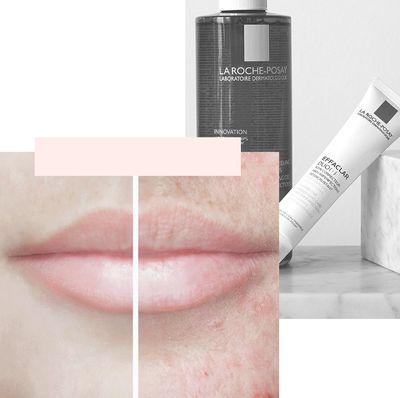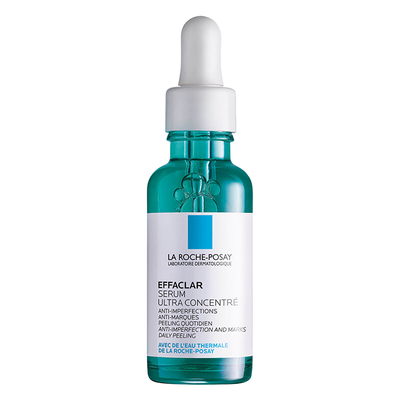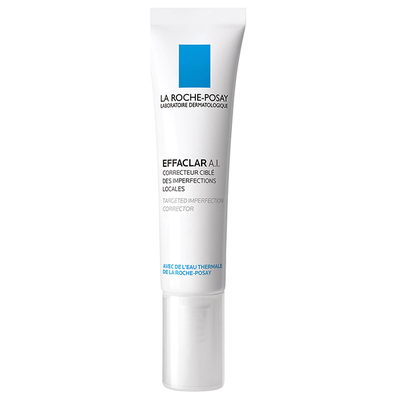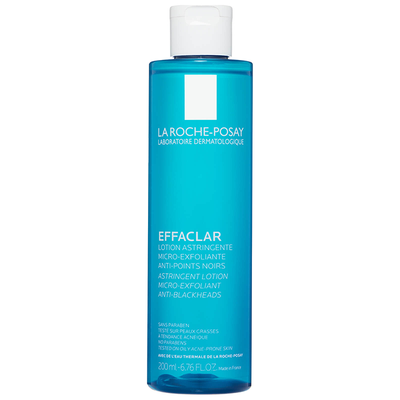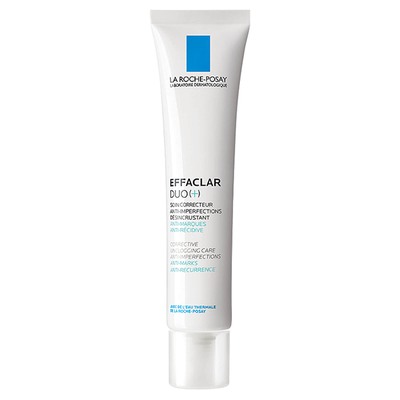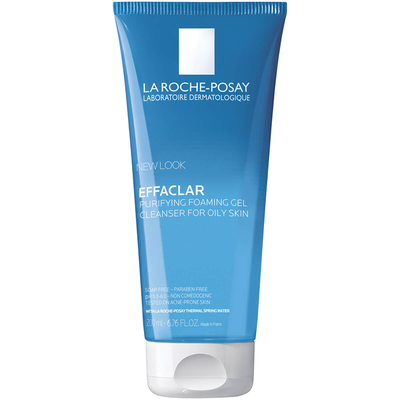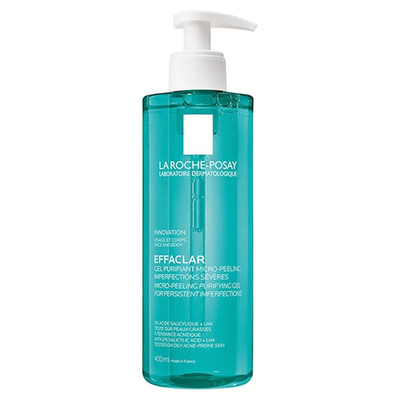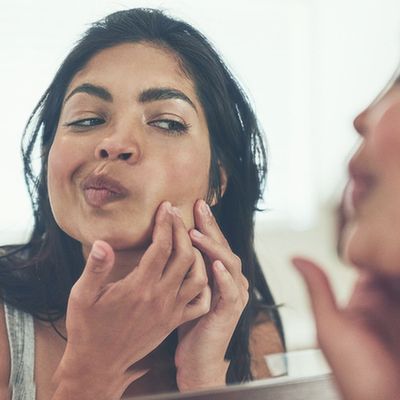
Adult Acne: Why It Happens & How To Treat It
CREATED IN PARTNERSHIP WITH LA ROCHE-POSAY
Firstly, Accept There’s No Single Cause
“Adult acne is incredibly common now – so much so, lots of people will at some stage in their life have a memorable flare-up. It’s on the increase and in all honesty, we’re unsure as to why. There isn’t one single cause, but hormonal acne plays a huge part – especially throughout puberty when you get a large surge in hormones. However, there are other causes too, including pollution, genetics, stress and certain medications, so there are a number of factors at play. One cause which should be thrown out is ‘dirty skin’ – this doesn’t lead to acne or breakouts. While cleansing is important, you should remember the skin cleanses itself, so it’s a myth that dirtiness is the sole cause of any flare-up.”
Understand If It’s Definitely Acne
“Often we think it’s acne when it’s just flare-ups. Typically, most people have a combination of several features of acne – that includes pimples, blackheads and sometimes whiteheads too which sit under the surface of your skin. On the more extreme side, you can also get deep, painful cysts that are filled with inflammatory cells. This type of spot tends to be deeper and more painful, lasting several weeks which makes them high risk for scarring. The treatment for this type of acne comes down to prescription-grade treatments and tablets, too. Whatever you do, never pick, though tempting, it’ll make the situation far worse.”
Set Yourself Some Goals
“Prevention is better than cure and developing a good routine will manage acne much better. It’s also important to set yourself goals and ask yourself what you want to achieve with your skin. My go-to rules include a thorough double cleanse twice a day. This is important as it removes build-up of dead skin cells, pollution and dirt that accumulates throughout the day. On top of this, cleansing allows other products to penetrate deeper into your dermis. Follow up with an ‘active’ ingredient – like salicylic acid – which will reduce blemishes, or try oil-controlling ingredients that will reduce dead skin cell build up.”
Stick To A Solid Routine
“Skin – especially those prone to acne – loves monotony, so it’s important to build a good routine. Try using a gentle foaming cleanser that won't dry out your skin, then follow up with a serum that includes an ingredient like salicylic acid, which will penetrate your pores and dissolve plugs of oil and dead skin cells."
Take A Simplistic Approach
“My best advice is to strip things back where you can – especially if your skin is in the midst of a flare-up. Be gentle and take a light-handed approach. Never go too harsh with your products to just dry everything out – this is counter intuitive and will cause further breakouts as you’re just stripping your skin’s barrier, which is likely to lead to further inflammation. Keep everything simple and stick to products that will help. There are so many products out there, but using too much is a real no-no. Stick to cleansing, followed by SPF and then more potent ingredients at night when your skin enters its optimal repair phase.”
Get To Know Your Ingredients
“There are some other key ingredients worth trying for acne-prone skin. Look out for salicylic, but also glycolic and niacinamide. The latter works to reduce inflammation and acne breakouts but the benefits don’t end there – niacinamide is brilliant for reducing red marks, too, so when an acne spot is completely gone, this a great ingredient to try. As for glycolic, this is a great chemical exfoliant that reduces dead skin cells and brings back a nice even tone and better glow. It’s brilliant for reducing post-inflammatory pigmentation as well, which often happens after a bad flare-up of acne – think brown and red patches."
Avoid Oil-Based Cleansers
“If you’re suffering with acne, then avoid oil-based cleansers and moisturisers and go for lighter formulas instead, like cream cleansers as they are less likely to block your pores. While oil cleansers are good because they’re gentle, they can exacerbate oil levels, which isn’t what you want when you have acne. If you have had a bad breakout and your skin is feeling sensitive, instead of reaching for one, go for a silky cream instead."
Do Continue To Moisturise
“There is a common myth that oily, acne-prone skin should avoid using moisturiser, but this isn’t true. The consistency of oil that you naturally produce is entirely different to what you’re hydrating your skin with, so you still need to up the ante and repair your skin’s barrier to protect it from both pollution and UV."
Never Squeeze Your Blackheads
“Blackheads are a part of acne and they’re the result of excess oil and sebum levels. Plus, they block your pores and trap dirt. This then oxidises, giving that black appearance that we’re all so familiar with. Despite the temptation, avoid squeezing blackheads at all costs. When you prod and poke them, you push what’s inside them deeper down into the skin, which results in a further inflammatory response, causing infection and cystic lesions. In terms of treatment, chemical exfoliants are great for dissolving blackheads, including acids, retinol and benzoyl peroxide.”
Be Careful When Treating Scarring
“Scarring and acne tend to go together. Scarring manifests itself as a change in your skin’s texture and there is often pigmentation that occurs afterwards, too – be it red or brown patches. Hyperpigmentation like this will fade on its own – especially with the use of actives like niacinamide. Scarring however is trickier to treat. Unless you manipulate your collagen, no topical remedies (apart from retinoid to some extent) will get rid of it altogether. You need to look for more in-depth treatments like laser or chemical peels. It’s important you let your acne settle first though, before you consider treatments like this. See a GP or dermatologist first, then think about how you can improve scarring as a whole.”
Finally, Always Seek Out Expert Advice
“The final thing to say is if you’re concerned about breakouts and it’s affecting your self-confidence, always ask for some expert advice. We’re here to help and advise, so don’t put off making an appointment – especially if you find products aren’t working to remedy the issue.”
Here are some of Dr Zainab’s recommendations for oily & blemish-prone skin...
•La Roche Posay’s Effaclar Gel Purifying Cleanser is good for a day-to-day cleanse. It’s nice and gentle and unlike similar foaming formulas, it won’t dry out your skin. Use this regularly, then apply a salicylic acid serum alongside it.
•Effaclar Serum. Get to know your ingredients. Enriched with Salicylic acid, glycolic and niacinimide. Incorporate this serum gradually – don’t go straight in, build up your usage to once or twice a week, then increase your dosage.
•La Roche Posay’s Toleriane Ultra Moisturiser is so smooth and will help your skin repair its barrier. It’s also non-comedogenic, which means it won’t clog up you pores and cause any breakouts.
• Try the Effaclar Duo(+) Moisturiser for oily, blemish-prone skin. Again, it’s non-comedogenic, and the formula is enriched with niacinamide – it’s a great all-rounder.
Shop La Roche Posay's Anti-Blemish Effaclar Range...
Visit Boots.com
CREDITS: ISTOCK/PEOPLE IMAGES , ISTOCK/DIMID_86
DISCLAIMER: We endeavour to always credit the correct original source of every image we use. If you think a credit may be incorrect, please contact us at info@sheerluxe.com.
